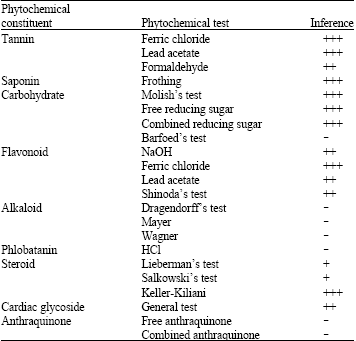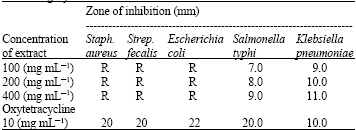Research Article
Preliminary Phytochemical and Antibacterial Evaluation of Crude Aqueous Extract of Psidium guajava Leaf
Department of Veterinary Medicine, University of Maiduguri, Maiduguri, Bomo State, Nigeria
A.G. Ambali
Department of Veterinary Medicine, University of Maiduguri, Maiduguri, Bomo State, Nigeria
P.A. Onyeyili
Department of Veterinary Physiology and Pharmacology, Faculty of Veterinary Medicine, University of Maiduguri, Maiduguri, Bomo State, Nigeria










